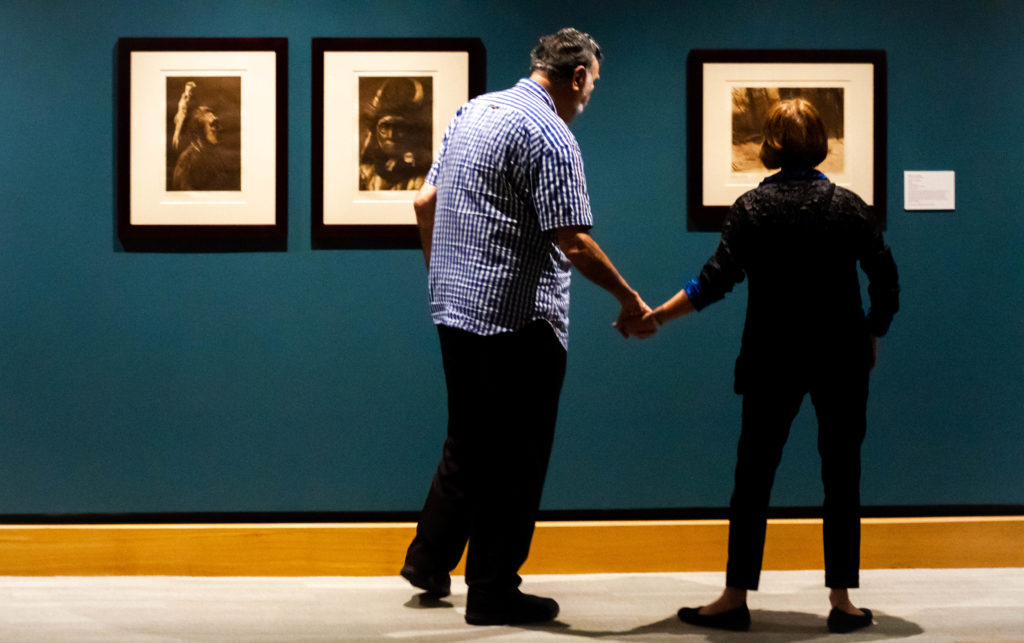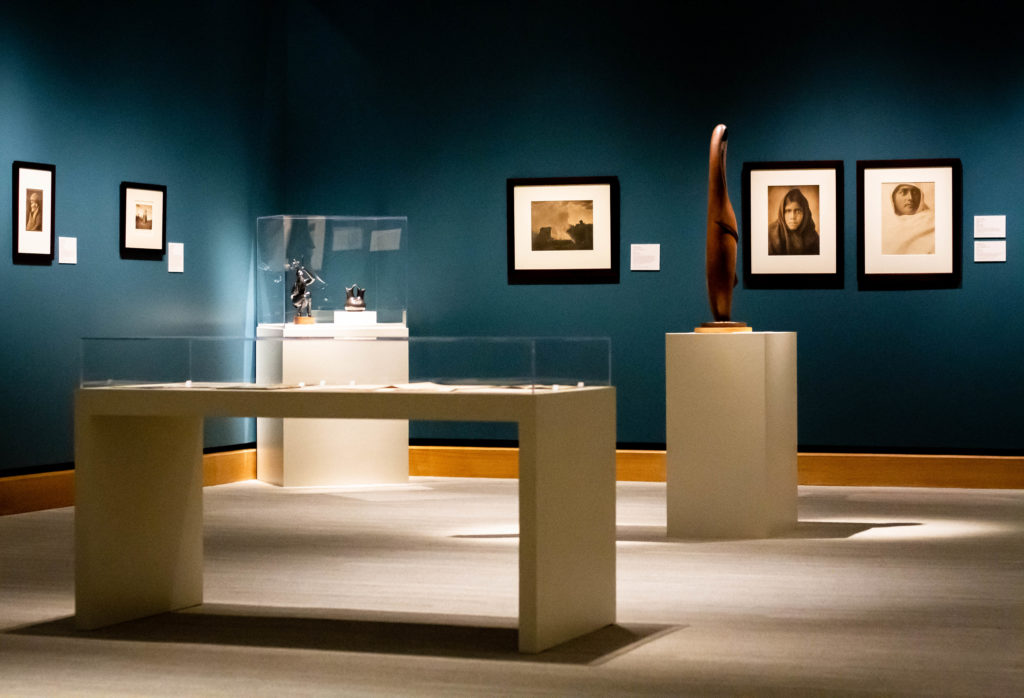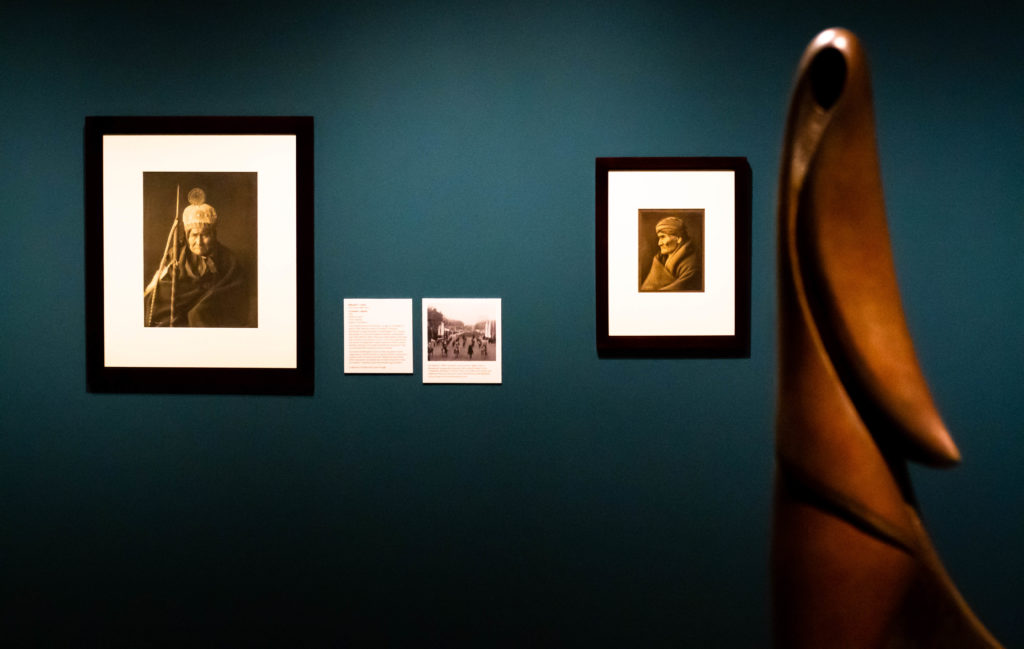
A couple stands and admires the works on display at the special exhibition “The Cultural Connections of Edward S. Curtis.”
Sculptures and other artistic works are on display, complimenting the Curtis’ photographs that line the gallery wall.
Two well-known Curtis portraits of the famous Apache leader Geronimo are mounted on the gallery wall, capturing the expressive and retrospective mood of the famous warrior.
Story and photos by Thomas Iacobucci
The James Museum of Western and Wildlife Art is offering visitors a brief glimpse into the life and work of early 20th century American photographer Edward S. Curtis through a special exhibition titled “The Cultural Connections of Edward S. Curtis.”
At the turn of the century, Curtis took his cameras and traveled across the western region of the United States to document the rapidly disappearing Native American cultures.
With deep respect and admiration for the Native peoples, Curtis captured scenes and portraits of different tribes in their daily life, conveying a sense of humanity that was lost to the public at that time.
Within the special exhibition, there are around 60 photographic prints, as well as sculptures and pieces of pottery from the James collection to supplement the show.
“It is such a great record of photography in indigenous communities and of these cultures, as well as stunning works of art,” said Emily Kapes, curator of art at the museum.
In his travels, Curtis used a plethora of cameras, each specific to the images he was producing.
“Curtis was such a master of composition and of light,” Kapes said.
The majority of the photographs within the exhibition are photogravures, or prints made from etchings, though there are also silver gelatin prints, cyanotypes, platinums, gold-toned images and three rare gold-toned images on glass, all within the original frames.
“It really does view like you are looking through a window at a scene,” Kapes said. “It really doesn’t look like a photograph.”
Organized by tribe, the exhibit displays Curtis’ work from his time spent with the Apache, Navajo, Sioux, Santa Clara, Flathead, Crow, Tewa Pueblo, Cheyenne and the Hopi. These are just some of the 80 tribes he was embedded with and documented throughout his life.
“I wanted to have a variety of compositions and subjects in the exhibition,” Kapes said. “(Curtis) is known for portraits primarily, but there’s so many other scenes, and I wanted to show variety within that and with what he was able to do.”
Visitors will be able to explore the traditions from the various tribes and learn the early photographic processes Curtis used when producing the thousands of images he took, all while achieving a newfound appreciation for Native American and indigenous cultures.
The show will run from April 6 to July 21 at the James Museum Special Exhibition gallery, 150 Central Ave. Entry is free with admission.



